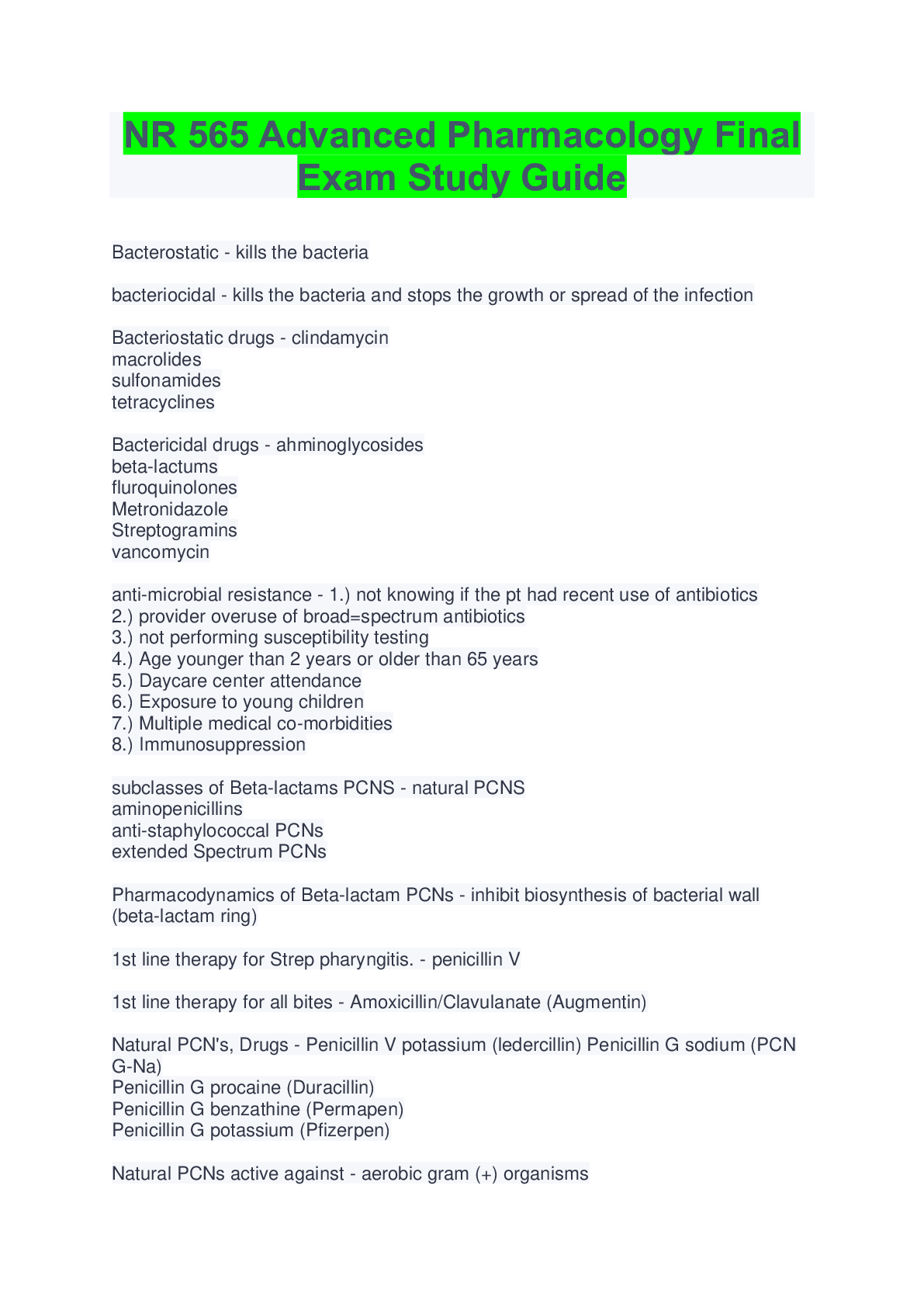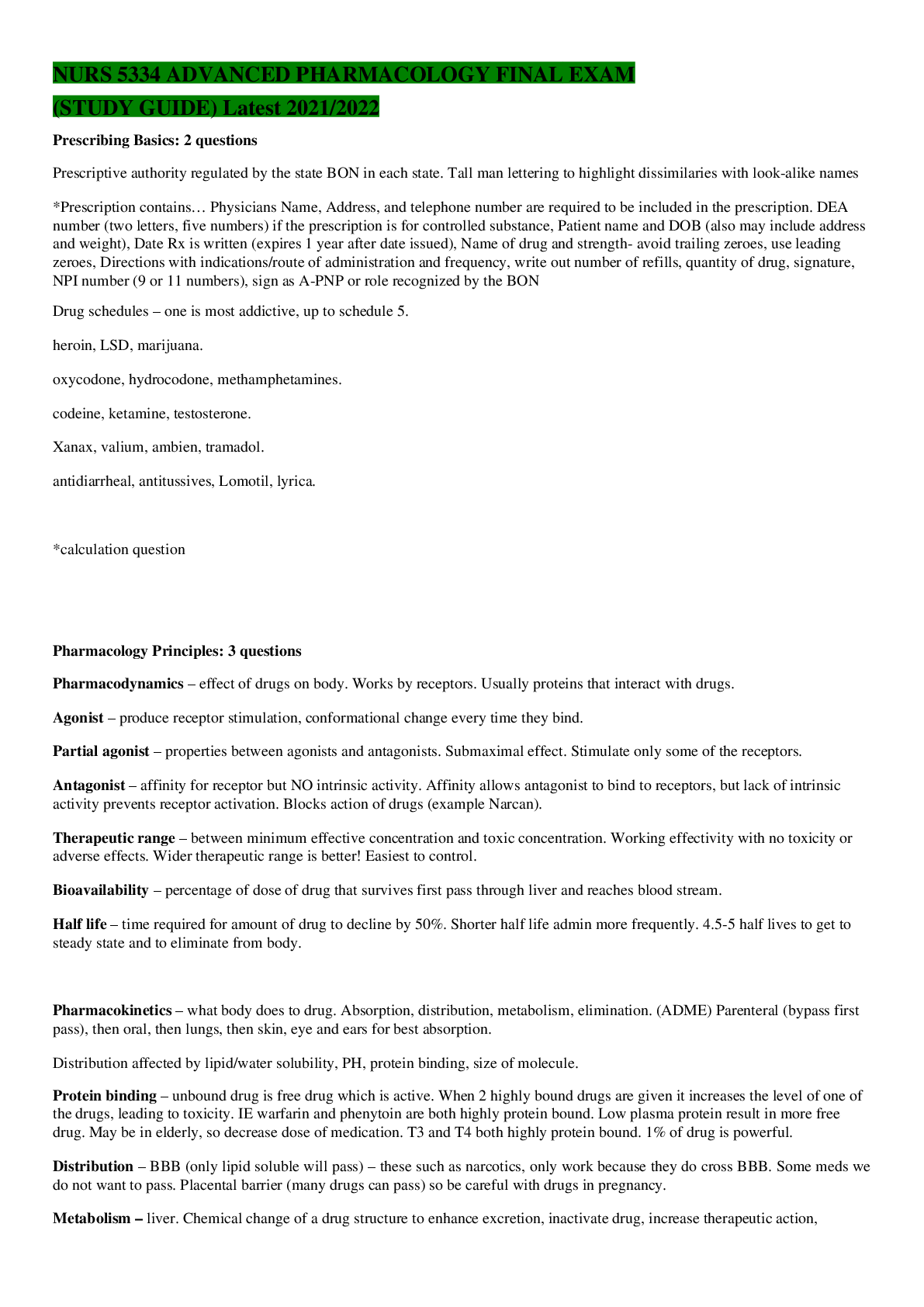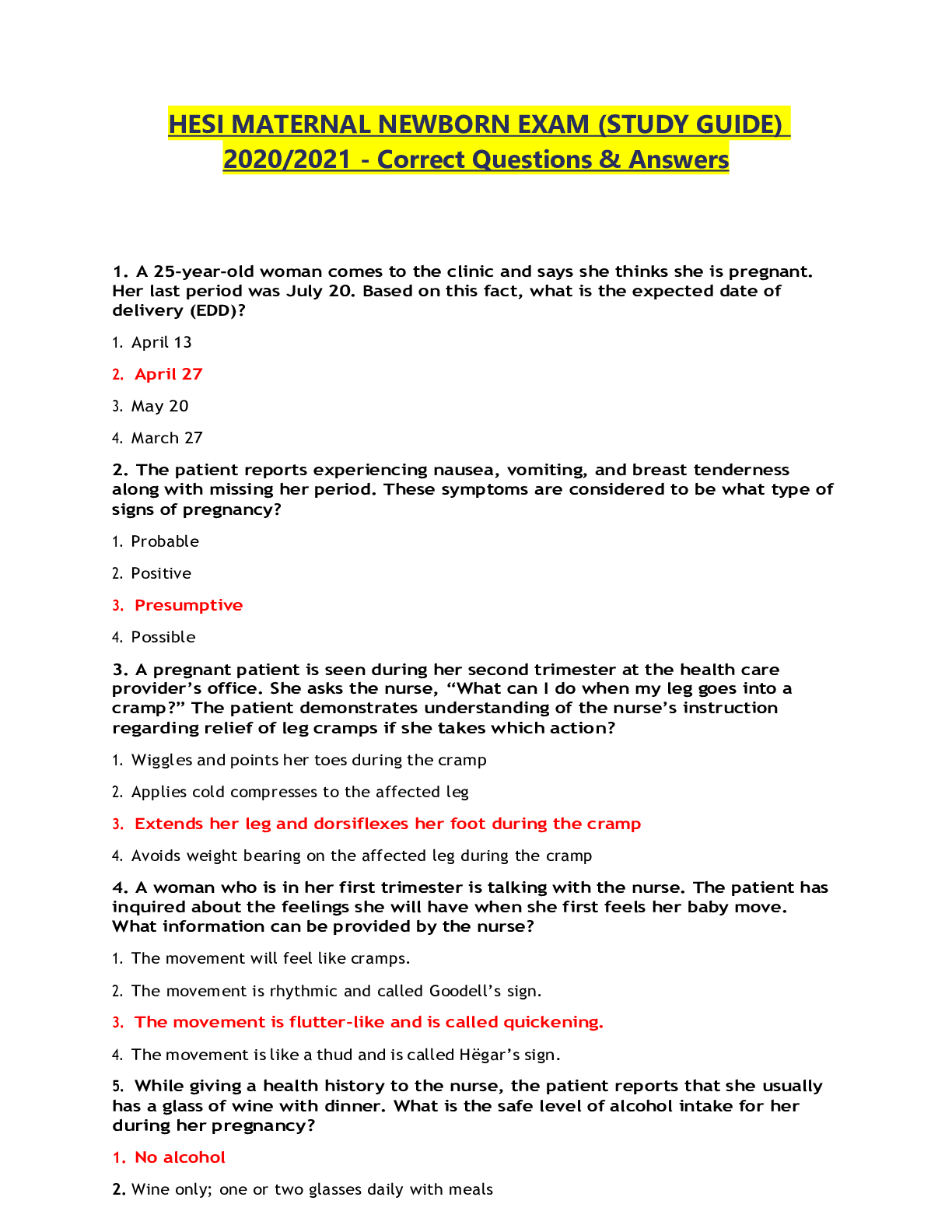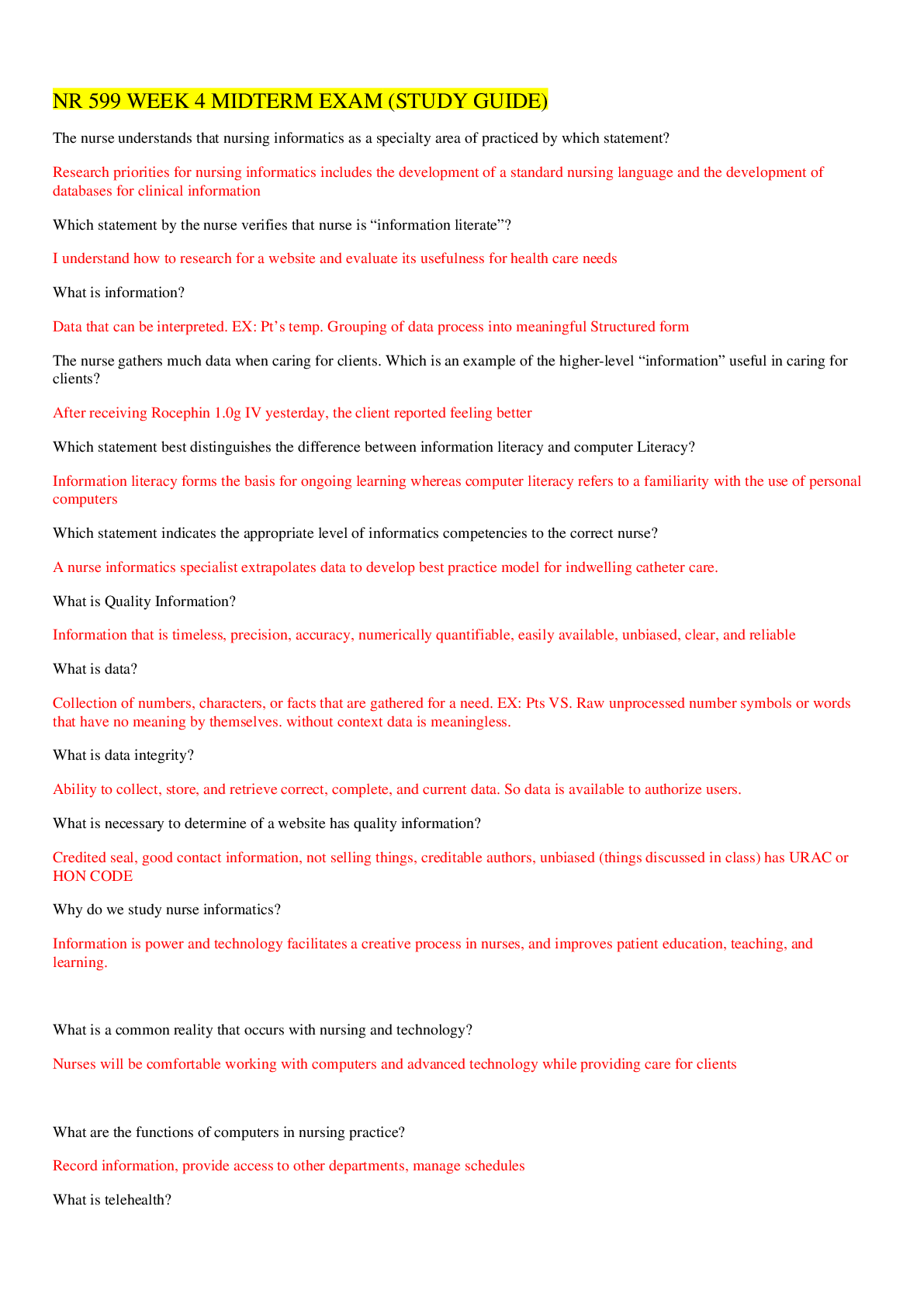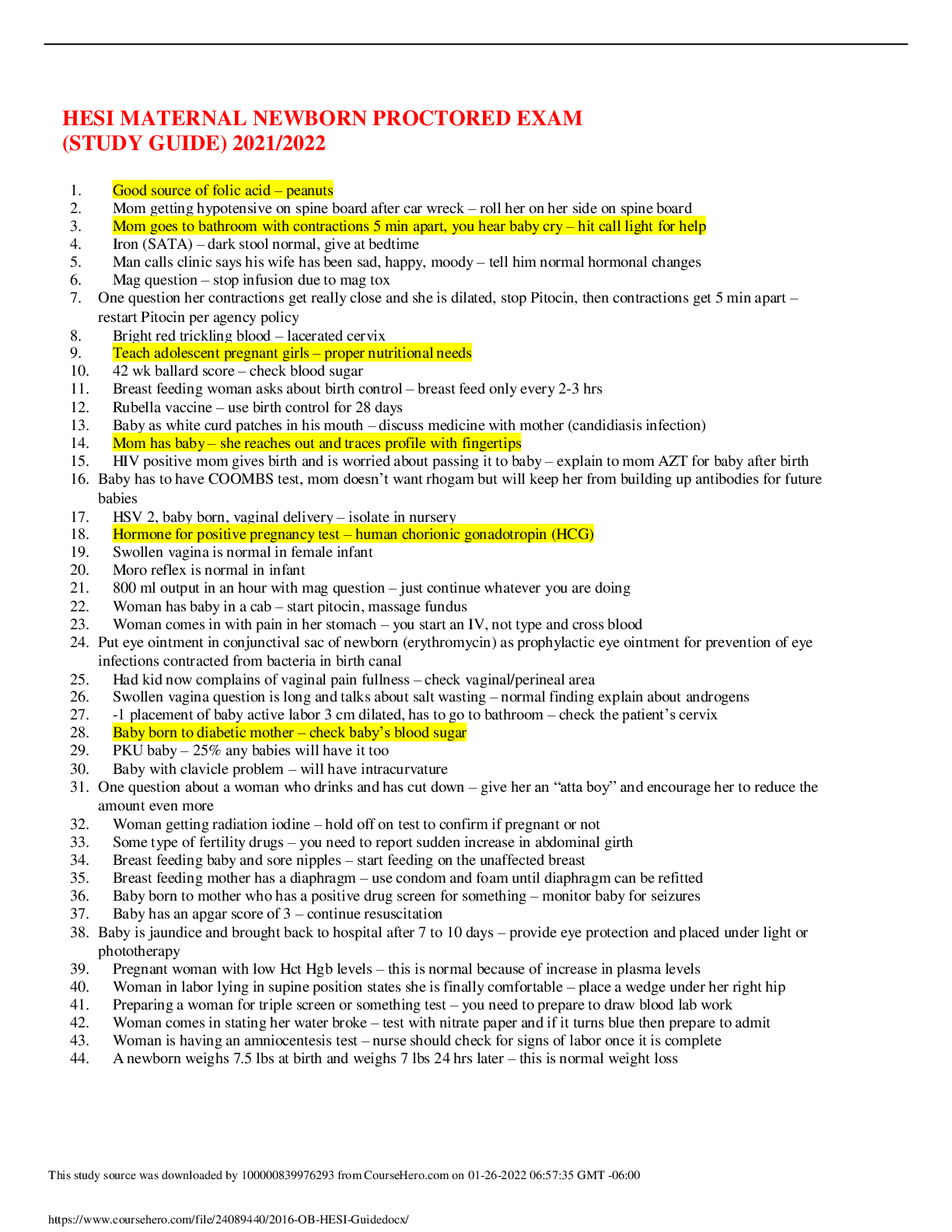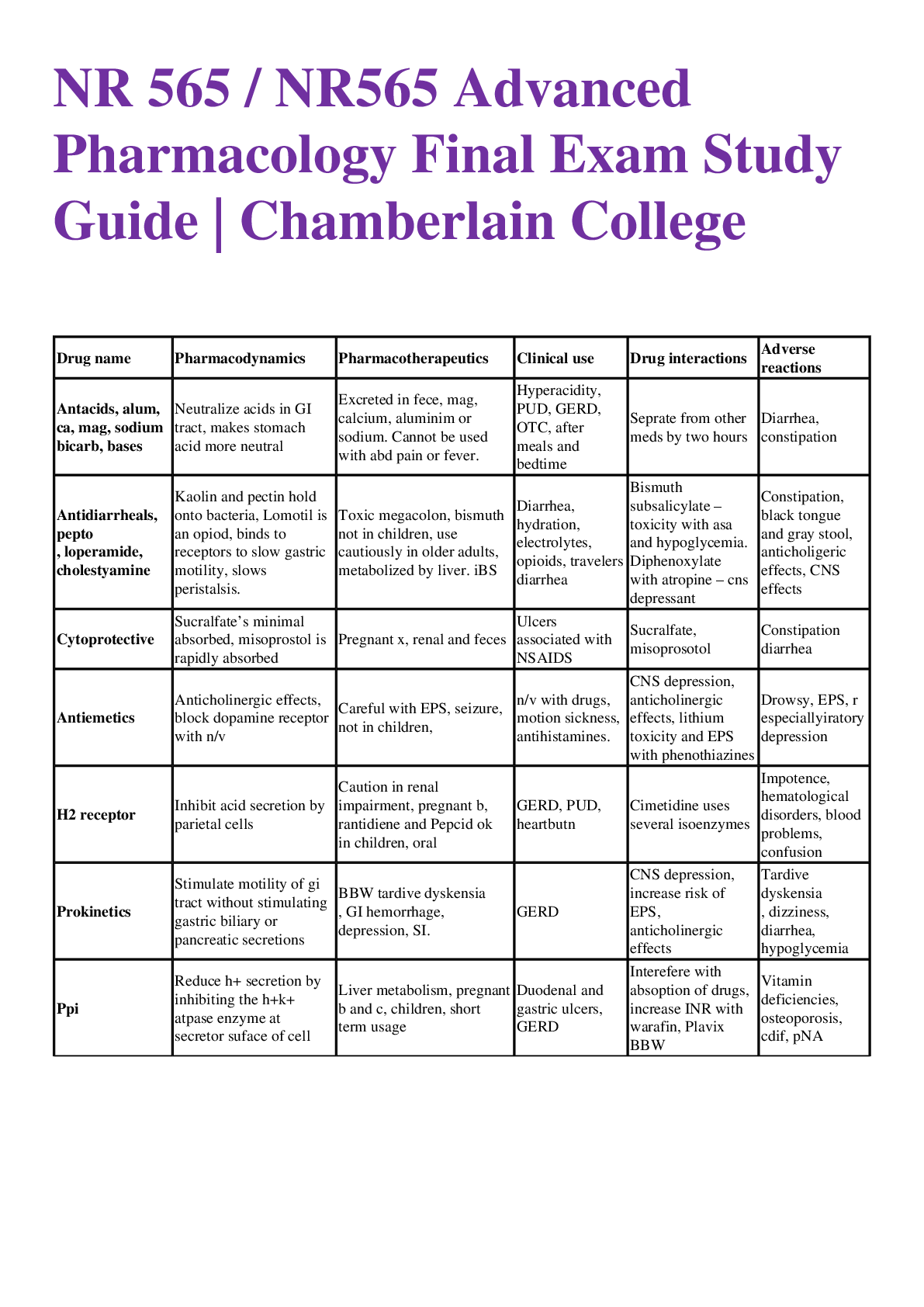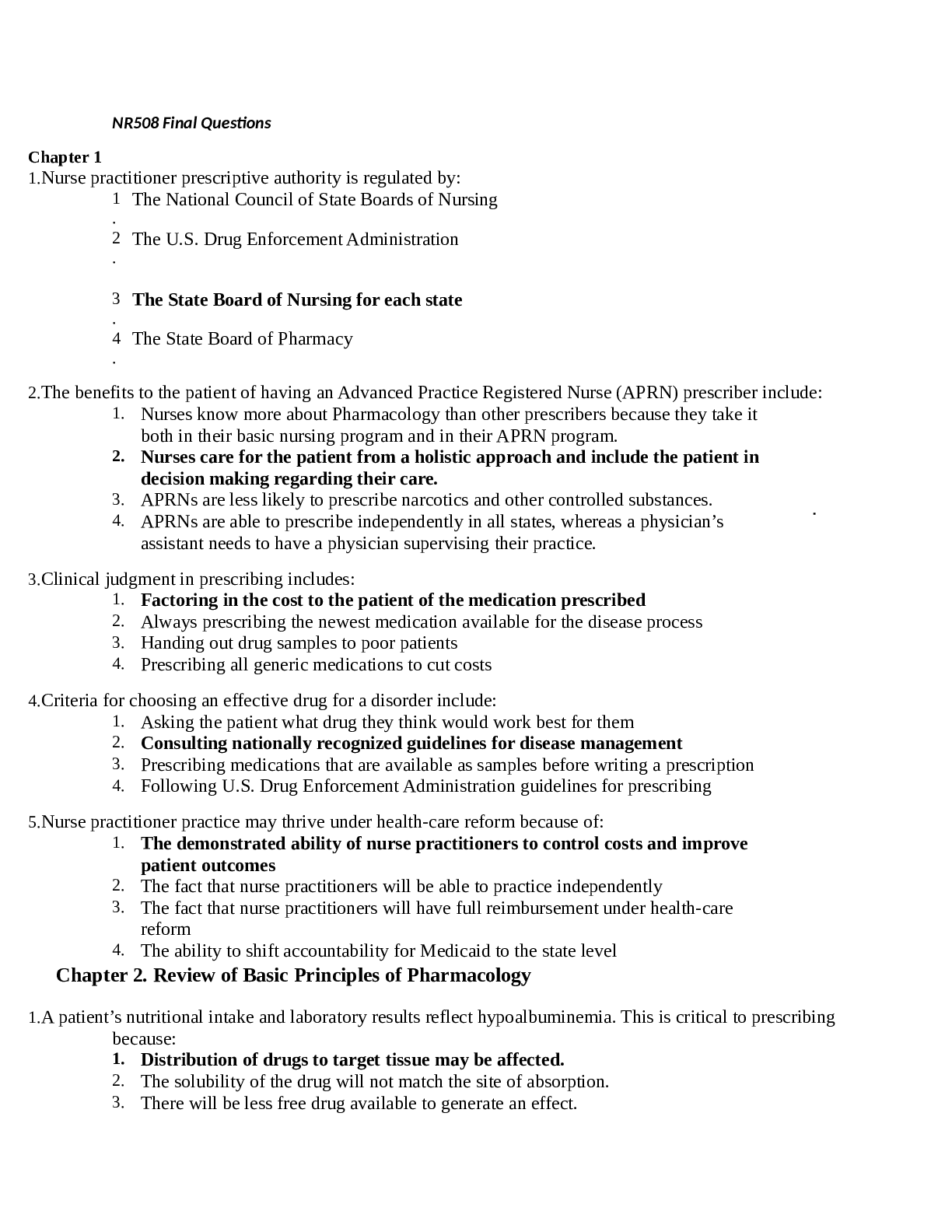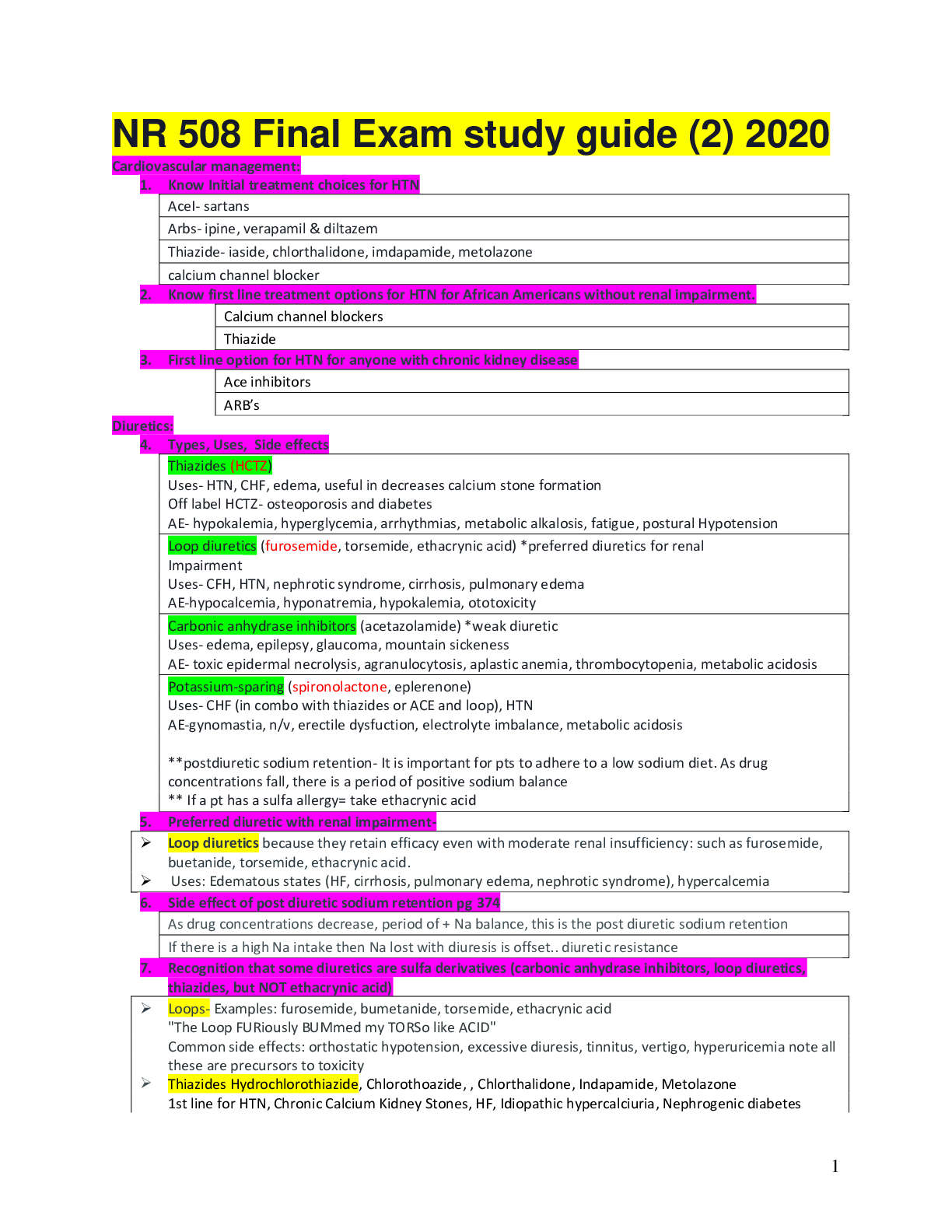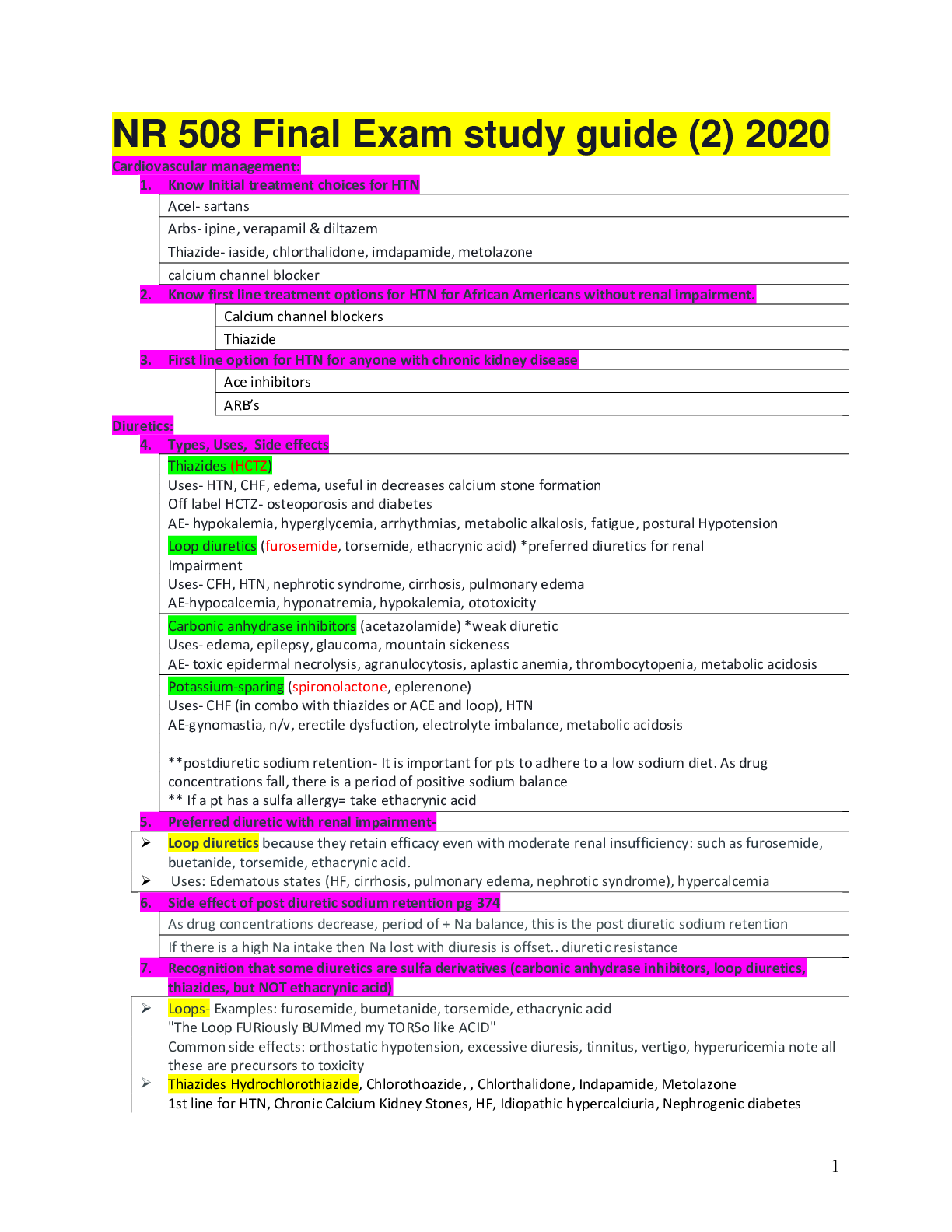Health Care > STUDY GUIDE > NURS 6521 ADVANCED PHARMACOLOGY FINAL EXAM (STUDY GUIDE) Latest 2021/2022 (All)
NURS 6521 ADVANCED PHARMACOLOGY FINAL EXAM (STUDY GUIDE) Latest 2021/2022
Document Content and Description Below
Prescribing Basics: 2 questions Prescriptive authority regulated by the state BON in each state. Tall man lettering to highlight dissimilaries with look-alike names *Prescription contains… Physici... ans Name, Address, and telephone number are required to be included in the prescription. DEA number (two letters, five numbers) if the prescription is for controlled substance, Patient name and DOB (also may include address and weight), Date Rx is written (expires 1 year after date issued), Name of drug and strength- avoid trailing zeroes, use leading zeroes, Directions with indications/route of administration and frequency, write out number of refills, quantity of drug, signature, NPI number (9 or 11 numbers), sign as A-PNP or role recognized by the BON Drug schedules – one is most addictive, up to schedule 5. 1)heroin, LSD, marijuana. 2)oxycodone, hydrocodone, methamphetamines. 3)codeine, ketamine, testosterone. 4)Xanax, valium, ambien, tramadol. 5)antidiarrheal, antitussives, Lomotil, lyrica. *calculation question Pharmacology Principles: 3 questions Pharmacodynamics – effect of drugs on body. Works by receptors. Usually proteins that interact with drugs. Agonist – produce receptor stimulation, conformational change every time they bind. Partial agonist – properties between agonists and antagonists. Submaximal effect. Stimulate only some of the receptors. Antagonist – affinity for receptor but NO intrinsic activity. Affinity allows antagonist to bind to receptors, but lack of intrinsic activity prevents receptor activation. Blocks action of drugs (example Narcan). Therapeutic range – between minimum effective concentration and toxic concentration. Working effectivity with no toxicity or adverse effects. Wider therapeutic range is better! Easiest to control. Bioavailability – percentage of dose of drug that survives first pass through liver and reaches blood stream. Half life – time required for amount of drug to decline by 50%. Shorter half life admin more frequently. 4.5-5 half lives to get to steady state and to eliminate from body. Pharmacokinetics – what body does to drug. Absorption, distribution, metabolism, elimination. (ADME) Parenteral (bypass first pass), then oral, then lungs, then skin, eye and ears for best absorption. Distribution affected by lipid/water solubility, PH, protein binding, size of molecule. [Show More]
Last updated: 1 year ago
Preview 1 out of 36 pages
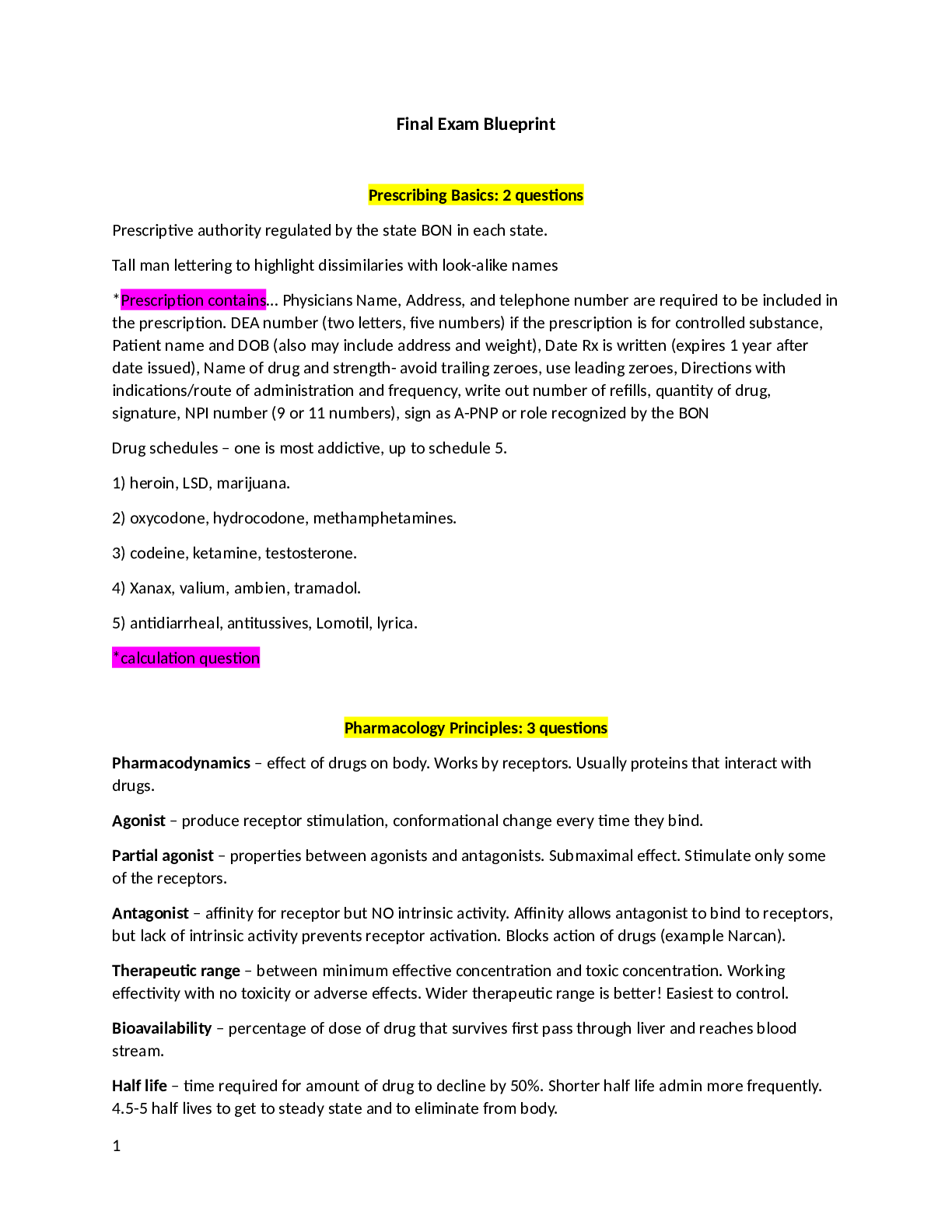
Reviews( 0 )
Document information
Connected school, study & course
About the document
Uploaded On
Mar 17, 2022
Number of pages
36
Written in
Additional information
This document has been written for:
Uploaded
Mar 17, 2022
Downloads
0
Views
33


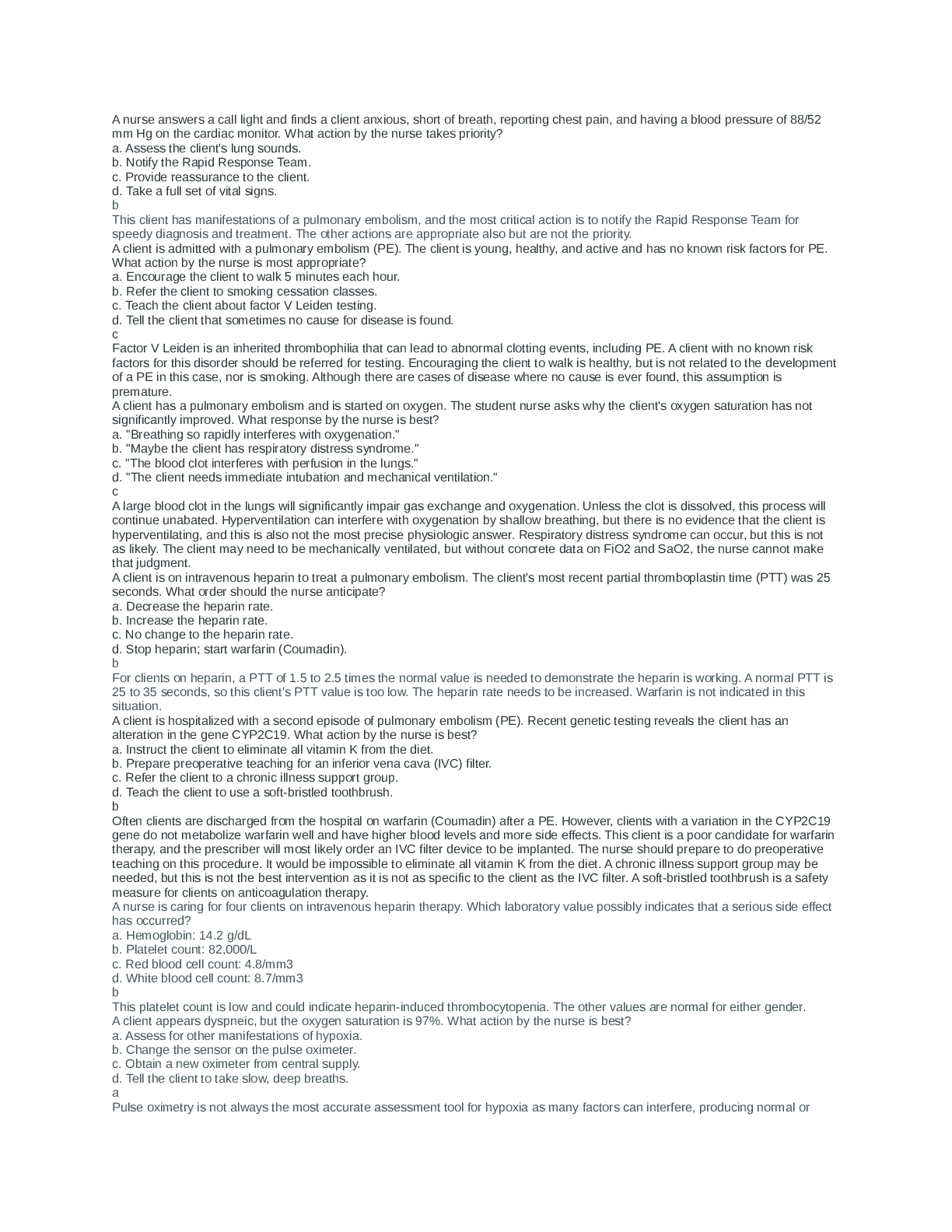
.png)
.png)



.png)
.png)

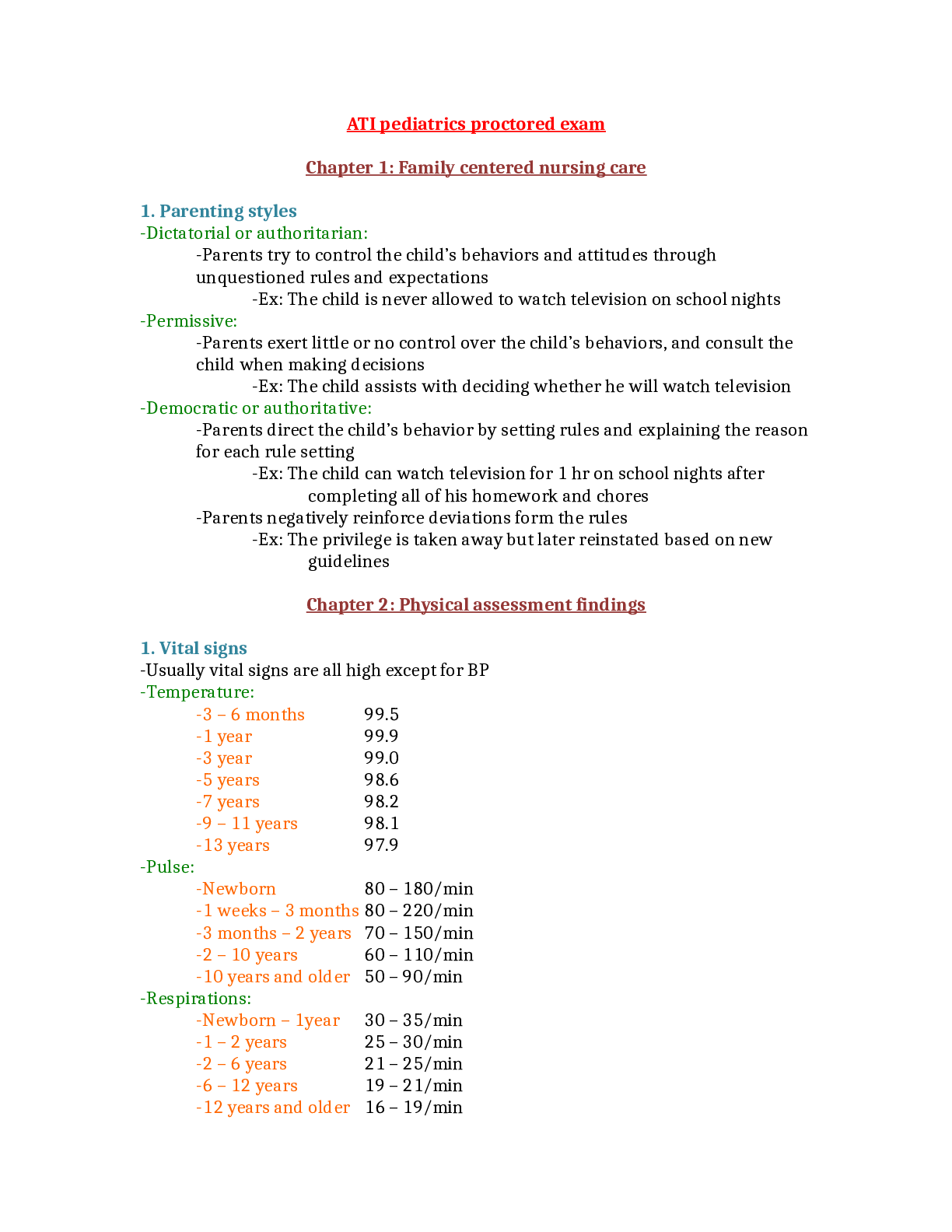
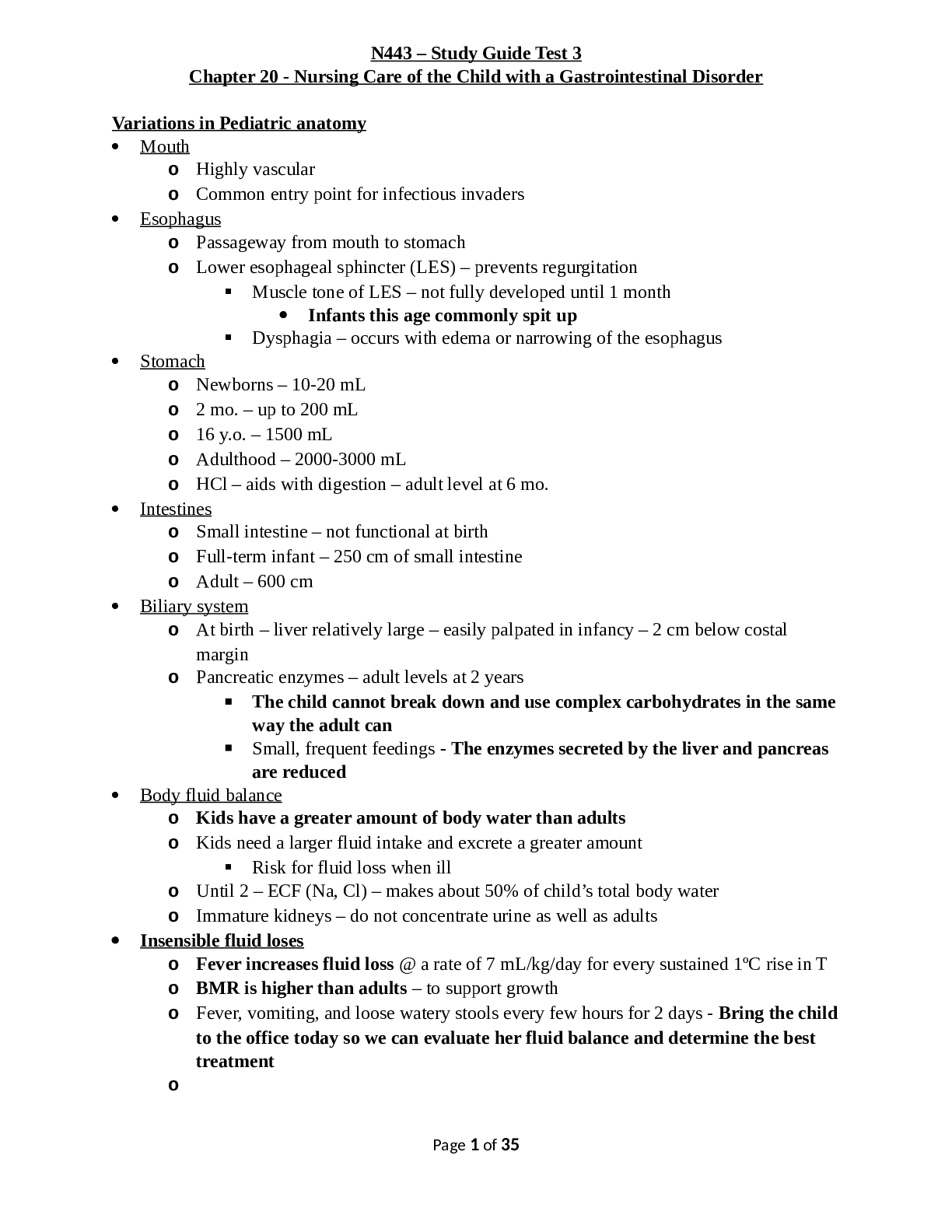
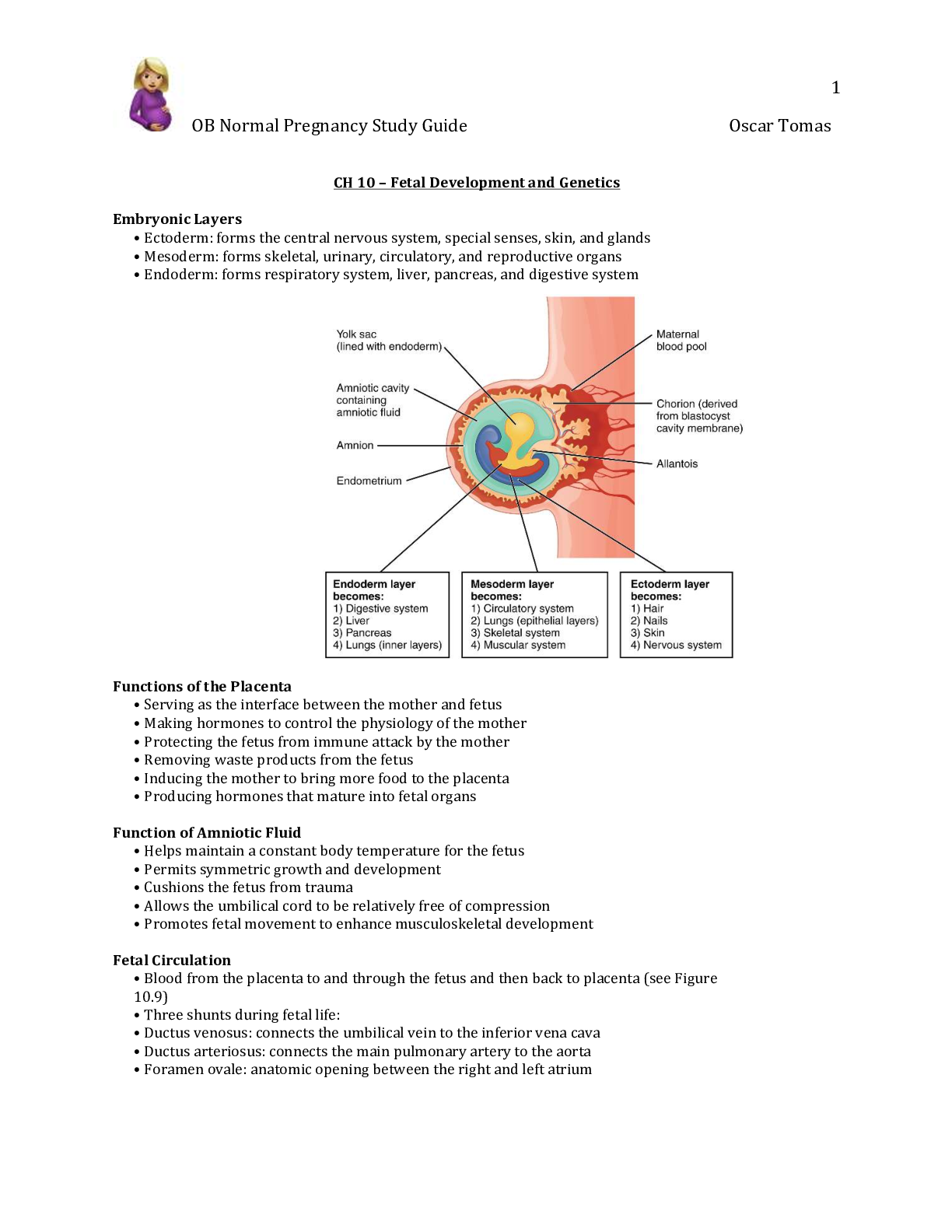

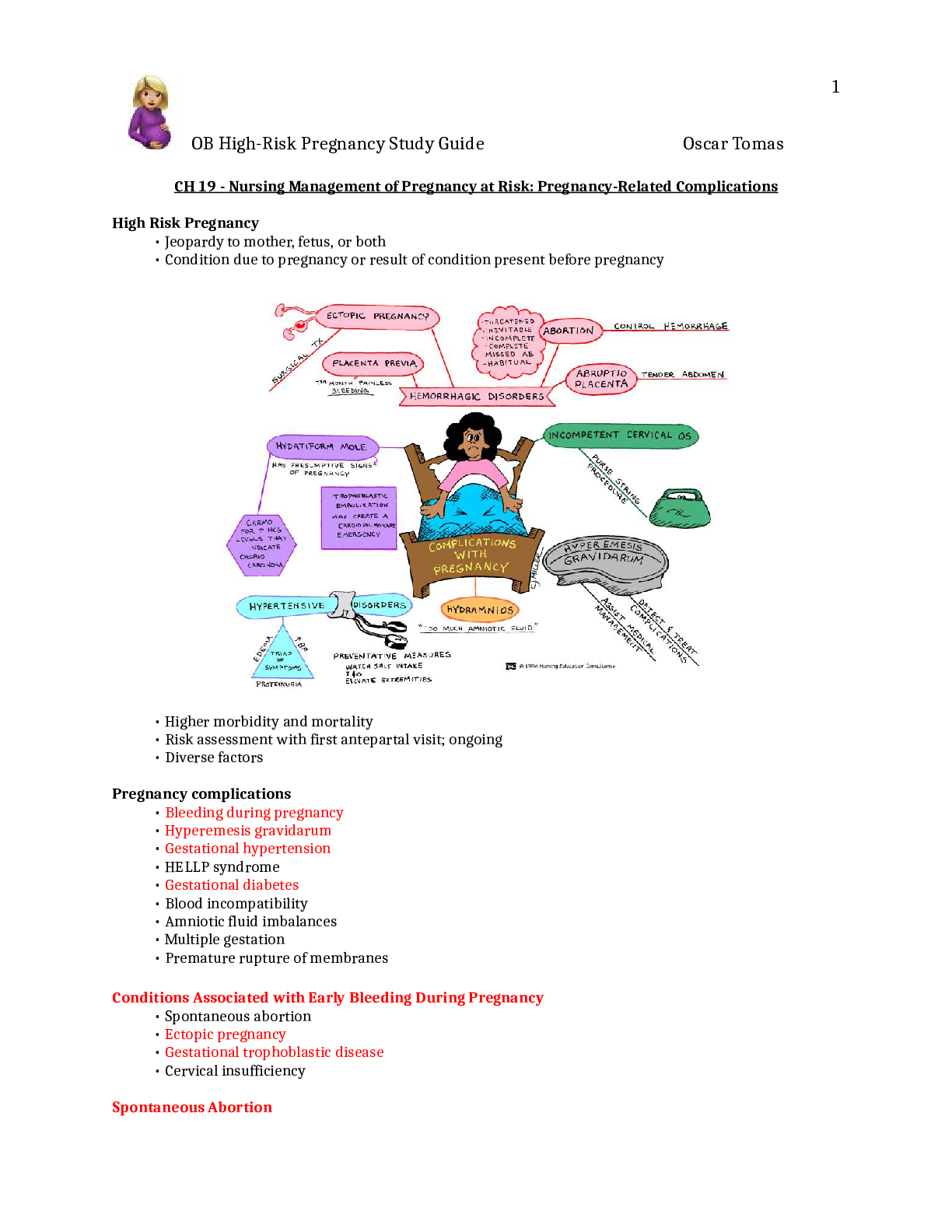

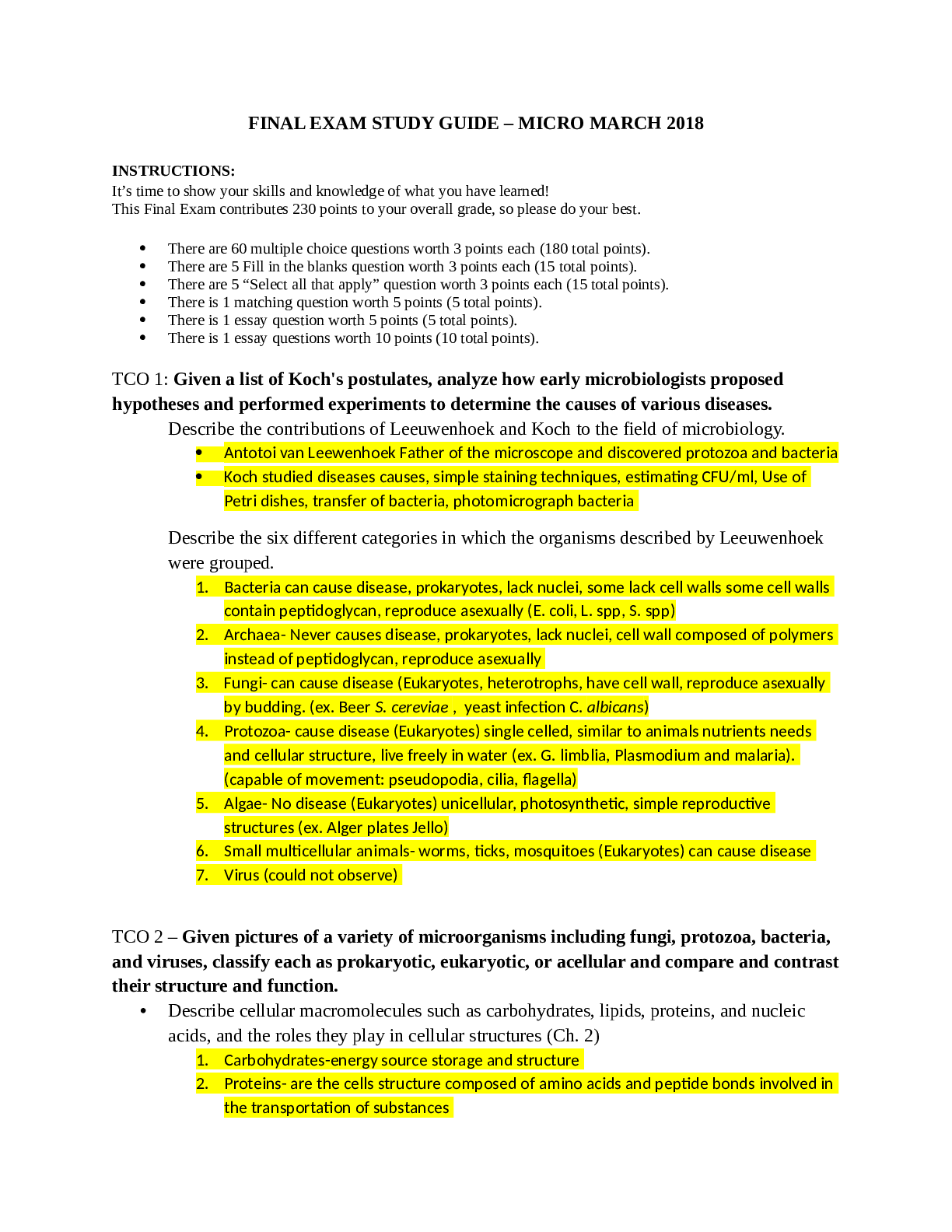

.png)
